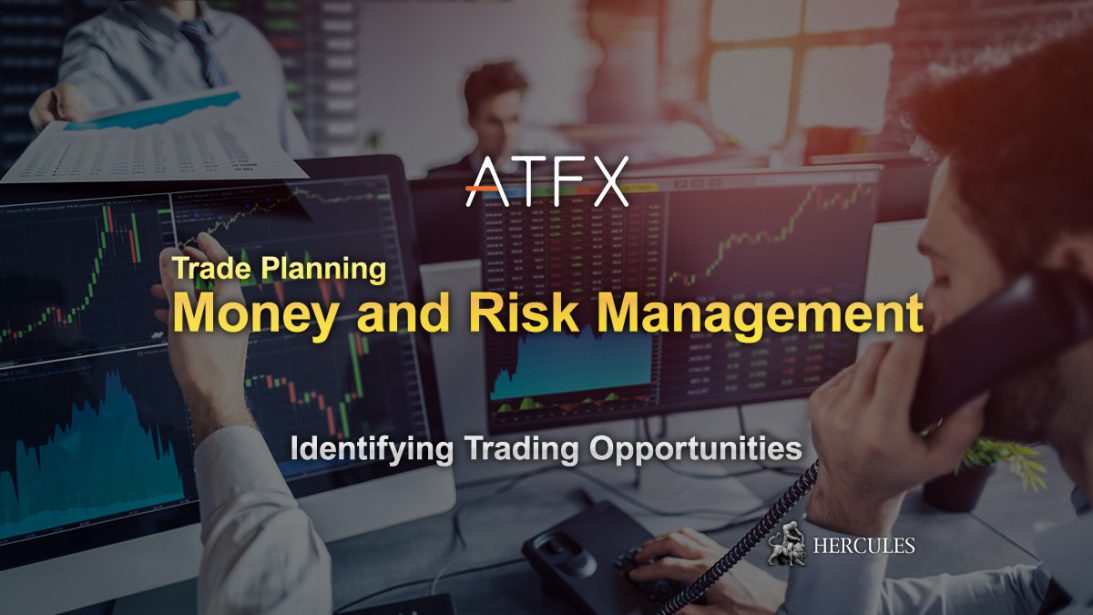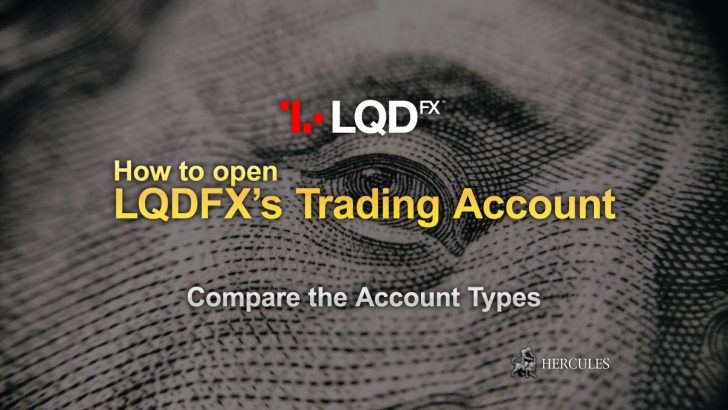Categories
How to trade and make profits on ATFX MT4?
How to plan your trading strategy and trade smartly on ATFX MT4?


Notice
This Post has ended its release period. Please check ATFX's latest information and campaign on ATFX's company introduction page.
ATFX - What's now?
We are no longer promoting ATFX. The information regarding to ATFX on the website '' maybe outdated. ref. ATFX
- Money and Risk Management: Trade Planning
- Most traders don’t risk more than percent
- Set your Stop Loss using Technical Tools
- Calculate your maximum position size based on your stop-loss level
- Trend Following Strategy
- What does a trend look like?
- Entering an uptrend
- Exiting a trend
- Short Selling
- Channels
- Short Selling – Trading Tools
- Both hands free
- Identifying short selling opportunities
- Risk and reward analysis
- Summary
Money and Risk Management: Trade Planning
Before we proceed to explore strategies we need to consider Money and Risk Management.
You need some risk management tools to ensure that you have the best chance of making more than you lose, overall, when trading in the financial products offered by ATFX.
For simplicity, we will use stock prices in examples, but these rules apply to any CFD trade you make, whether its underlying asset are shares, indices, futures contracts or commodities.
Most traders don’t risk more than percent
If you risk 5% of your initial trading capital on each of ten trades in a row and lose that amount on each, then half your capital is gone.
The percentage gain required to recoup your losses increases at a much more rapid rate than the loss of capital.
So 5% is far too much to risk on one trade, as most traders don’t risk more than 1%.
The risk we are talking about is the maximum you will lose on the trade if it goes in the wrong direction and triggers your stop-loss order.
The first step is to decide on where the stop-loss level should be.
How to open ATFX’s Trading Account?
Set your Stop Loss using Technical Tools
Never enter a trade without first deciding at what point you will exit if the trade goes against you.
For along position, one way of doing this is to look back in the past and find a point where the price has met support (from a technical analysis perspective) – a level where new buying checks further decline, causing the price to go back up.
Place the stop-loss order just below this level.
For a short position, look for a resistance level again, from a technical analysis perspective) near your entry price.
This is the price where, in the past, new selling has prevented further rises and the price has repeatedly moved down again after reaching this level.
Place your stop-loss order just above the resistance level.
Alternatively, check the typical daily price range – the amount the price has been moving, on average, in a day – and set the stop loss at, say twice this amount.
For a long position in a stock with a daily range of lo cents a share, place the stop zo cents below the entry point.
Use an Average True Range (AIR) calculation to refine this strategy (type ‘average true range’ into your internet search engine for more details).
Different multiples of ATR may work better in different markets.
Calculate your maximum position size based on your stop-loss level
If your risk capital is Sio,000 and your stop-loss is set at 20 cents a share away from the entry price, your maximum position size is the 1% of the capital you will risk divided by zo cents.
You do not wish to lose more than Sioo (Sio,000 *1% = Sioo) on the trade, so the position size will be Sloo/So.zo or Soo shares.
Remember to adjust the position size if you need to move the stop-loss level (for example, if the daily range increases dramatically).
Trend Following Strategy
Trend following, one of the most important concepts in technical analysis, makes use of the tendency of many markets to move in one direction for a considerable time.
It doesn’t matter whether the trend is up or down provided it lasts long enough for your position to earn significant rewards.
It’s one of the easiest technical tools to use, and it works particularly well in commodity and foreign currency markets.
It’s one of the easiest technical tools to use & it works particularly well in commodity & Foreign currency markets.
How to open ATFX’s Trading Account?
What does a trend look like?
As a price moves up, it keeps making new recent high prices and often falls back to a lower point that is still higher than previous lows.
This succession of higher highs and higher lows defines an upward trend.
This is defined on a weekly bar or candle chart The uptrend, drawn underneath, connects at least three of the low points, each one higher than the last, in a straight line.
If the price moves significantly below the trend line.
This is the time to bring in a take profit strategy.
The current upward trend is probably over, although a longer-term upward trend may still be in place.
Entering an uptrend
Entering an uptrend once it is in place involves buying on any pullback on the price.
In the Rio Tinto example, the time to buy is indicated by the price touching the uptrend line for the third time in late August, a sign that the uptrend is in place.
It may also be possible to identify a potential uptrend before it starts using RSI in oversold levels.
For example, when the RSI/14 is below 30 this often indicates oversold levels and can be a place to buy.
Exiting a trend
You should not exit your CFD until the underlying market tells you the trend is over.
For an uptrend, as the price rises, you keep moving your stop- loss point higher (i.e. use a “trailing stop”) so that you exit on any reversal of a known size, usually based on average true range (ATR).
When such a trailing stop has been entered into the trading platform, the exit is automatic.
Earlier, more profitable exits might be spotted using such indicators as head-and-shoulders tops and double tops.
Similarly, if you are short, let the market tell you when the downtrend is over.
Move your trailing stop down closer to, but still above, the current price by an amount based on ATR.
Just remember before trading makes sure you understand the strategy and ensure that it fits your trading plan.
How to open ATFX’s Trading Account?
Short Selling
Don’t be afraid to use a downtrend to profit from falling prices.
If the trend is in place, sell on any bounce up close to the downtrend line.
A price that has been steadily moving up and suddenly moves down through the uptrend line signals a possible downtrend in the making, as does a move downward through a long-term moving average of so or no days.
Channels
Prices that have been steadily but only slowly rising, drifting lower, or moving sideways, may form a channel in which the highs can be connected on the high side and the lows form a parallel – or almost parallel – straight line on the low side.
A price that moves strongly, breaking through the channel line on either side, is likely to keep moving in that direction.
In other words, a rise in price up through the channel line is a buy signal, while a break on the other side suggests a short sale.
Short Selling – Trading Tools
Short selling turns everything upside down.
Falling prices are now a benefit; rising prices are undesirable.
Instead of paying interest (as a financing charge on your open CFD contract), you actually receive a small amount for as long as you hold the CFD position open.
Stop losses are placed above the entry price, not below.
Markets do often move faster on the downside.
But this comes with a warning about volatility.
Fast-moving markets are extremely sensitive to changes in market sentiment- the emotional tenor of the market as shown by their reactions – usually overreactions – to changes in any fundamentals or the outlook for the future.
That means big swings in both directions are often experienced when markets are moving down quickly.
Risk management through stop-loss orders is even more vital at such times than when markets are steadily rising.
While an underlying asset has a lower limit on its price – it can’t fall below zero – it has potentially unlimited upward movement, with correspondingly greater risk if there is no stop-loss order in place on a short CFD position.
Short selling turns everything upside down.
Falling prices are now a benefit.
rising prices are undesirable.
Both hands free
People sell short – that is, sell or agree to sell assets they do not own at the time – for two reasons.
One is to hedge against a downturn in the price of the asset.
A copper miner may sell copper derivatives, for example, as a precaution against a falling copper price, or a fund manager may sell shares if he is concerned about falling share prices.
CFD traders are in the market to make profits from changing prices.
From the point of view of making gains, the ability to sell a CFD before buying it can potentially double the number of potentially profitable trades in your overall strategy.
Neglecting to consider the advantages of going short is a bit like having one hand tied behind you.
Identifying short selling opportunities
Traders use much the same tools when identifying a price that is likely to fall as they do when scanning for potential purchases.
Price and volume action as displayed on the charts can be the key.
With the help of trend lines, support and resistance levels, moving averages, reversal patterns and candlestick patterns, they identify a downtrend or a sign that the current period of upward or sideways movement has ended and that a reversal is likely.
Risk and reward analysis
How much am I risking on this trade? How much profit will I make if my analysis is right? Together, the answers to those questions define your risk-reward ratio.
If you risk Sion and your analysis suggests that your profit target – the price you think the market will probably move to – will give you a gain of $300, your ratio of reward to risk is 3:1.
You should calculate a risk-reward ratio for every trade you enter, whether long or short.
Note that you don’t necessarily close the open CFD position as soon as it reaches the profit target unless the price of the underlying asset is indicating a reversal.
If you go short and the market is still moving down when it reaches the target, consider reducing the position size, taking some profits but allowing most of the position to ride the ongoing downtrend.
Just as for a long trade, place your trailing stops using chart signals such as average true range or support and resistance.
Summary
In summary, this article delivers trading strategies and helpful information that will help you improve as a trader.
For traders that do understand how CFDs work and learn to minimize the associated risks, there can be substantial benefits.
Through the utilization of leverage and the convenience of online trading, short-term traders now have greater opportunities than at any time in the past.











